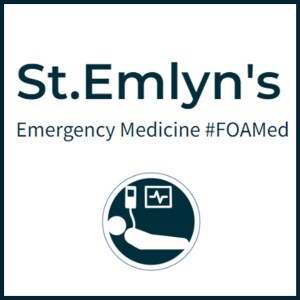
- Podcast Features
-
Monetization
-
Ads Marketplace
Join Ads Marketplace to earn through podcast sponsorships.
-
PodAds
Manage your ads with dynamic ad insertion capability.
-
Apple Podcasts Subscriptions Integration
Monetize with Apple Podcasts Subscriptions via Podbean.
-
Live Streaming
Earn rewards and recurring income from Fan Club membership.
-
Ads Marketplace
- Podbean App
-
Help and Support
-
Help Center
Get the answers and support you need.
-
Podbean Academy
Resources and guides to launch, grow, and monetize podcast.
-
Podbean Blog
Stay updated with the latest podcasting tips and trends.
-
What’s New
Check out our newest and recently released features!
-
Podcasting Smarter
Podcast interviews, best practices, and helpful tips.
-
Help Center
-
Popular Topics
-
How to Start a Podcast
The step-by-step guide to start your own podcast.
-
How to Start a Live Podcast
Create the best live podcast and engage your audience.
-
How to Monetize a Podcast
Tips on making the decision to monetize your podcast.
-
How to Promote Your Podcast
The best ways to get more eyes and ears on your podcast.
-
Podcast Advertising 101
Everything you need to know about podcast advertising.
-
Mobile Podcast Recording Guide
The ultimate guide to recording a podcast on your phone.
-
How to Use Group Recording
Steps to set up and use group recording in the Podbean app.
-
How to Start a Podcast
-
Podcasting
- Podcast Features
-
Monetization
-
Ads Marketplace
Join Ads Marketplace to earn through podcast sponsorships.
-
PodAds
Manage your ads with dynamic ad insertion capability.
-
Apple Podcasts Subscriptions Integration
Monetize with Apple Podcasts Subscriptions via Podbean.
-
Live Streaming
Earn rewards and recurring income from Fan Club membership.
-
Ads Marketplace
- Podbean App
- Advertisers
- Enterprise
- Pricing
-
Resources
-
Help and Support
-
Help Center
Get the answers and support you need.
-
Podbean Academy
Resources and guides to launch, grow, and monetize podcast.
-
Podbean Blog
Stay updated with the latest podcasting tips and trends.
-
What’s New
Check out our newest and recently released features!
-
Podcasting Smarter
Podcast interviews, best practices, and helpful tips.
-
Help Center
-
Popular Topics
-
How to Start a Podcast
The step-by-step guide to start your own podcast.
-
How to Start a Live Podcast
Create the best live podcast and engage your audience.
-
How to Monetize a Podcast
Tips on making the decision to monetize your podcast.
-
How to Promote Your Podcast
The best ways to get more eyes and ears on your podcast.
-
Podcast Advertising 101
Everything you need to know about podcast advertising.
-
Mobile Podcast Recording Guide
The ultimate guide to recording a podcast on your phone.
-
How to Use Group Recording
Steps to set up and use group recording in the Podbean app.
-
How to Start a Podcast
-
Help and Support
- Discover

Welcome to the St Emlyns blog! Today, we dive into a topic often overlooked but crucial to the functioning and financial health of emergency departments (ED): coding. This subject might not have the drama of resuscitations or surgical interventions, but it significantly impacts how we are perceived and funded. In this post, we explore how coding works in the context of emergency medicine in England, why it matters, and how we can improve our practices for better outcomes.
Understanding Coding in Emergency DepartmentsWhat is Coding?
In the simplest terms, coding is the process of translating medical activities into standardized codes that determine how much a hospital gets paid for the services provided. This is done through systems like the HRG-4 (Health-Related Grouping) codes, which classify the treatments and investigations performed on patients.
Why is Coding Important?
Accurate coding is essential because it directly affects the revenue of an emergency department. The details recorded in discharge summaries play a significant role in determining the funds a hospital receives. For instance, different procedures and investigations, like CT scans or blood tests, have specific codes that contribute to the total amount of money paid to the hospital.
The Financial Implications of CodingTop Earning Codes in Emergency Medicine
The highest amount an ED can earn for a single patient episode is £237, applicable in cases involving resuscitation, thrombolysis, or laser eye surgery. However, if no tests or treatments are performed, the hospital only earns £58 for that patient. This stark difference underscores the importance of detailed and accurate coding.
Common Investigations and Their Codes
- MRI/CT Scans: High-value procedures that significantly boost the hospital's revenue.
- Ultrasound Scans: Similarly valued to MRI/CT scans, contributing substantial amounts to the hospital's income.
- Vital Signs Recording: Even basic procedures like recording vital signs can elevate the payment from the lowest tariff.
Perception vs. Reality
Many healthcare professionals, including doctors and nurses, often view coding as an administrative burden rather than a critical part of patient care. This perception needs to change, as the quality of coding affects not only financial outcomes but also how the department's efficiency and effectiveness are perceived by external bodies like the CCG (Clinical Commissioning Groups).
The Role of IT Systems
Modern IT systems have made the coding process more streamlined, though they are not without their challenges. Integrating coding tasks into daily routines, such as through discharge summaries and GP letters, can help ensure that all activities are recorded accurately.
Improving Coding PracticesEducation and Awareness
Educating staff about the importance of coding and its impact on both departmental funding and patient care is crucial. Junior doctors and new consultants should be made aware of how their input affects the overall picture.
Dedicated Coding Staff
Some hospitals have experimented with employing dedicated coding staff who review and correct coding entries, leading to significant increases in revenue. This approach can alleviate the burden on clinicians and ensure more consistent and accurate coding.
Streamlining Processes
Integrating coding into clinical workflows can make it less of a chore. For example, requesting an X-ray through the hospital's system should automatically record it in the patient's coding data. Such improvements can simplify the process and reduce the likelihood of missed entries.
The Impact of Coding on Departmental PerceptionMeeting Standards and Avoiding Fines
In England, EDs are required to meet specific standards, such as the four-hour wait time target. Failing to meet these standards can result in fines, which further strain departmental resources. Accurate coding helps present a true picture of the department's workload and efficiency, potentially mitigating some of these financial penalties.
Communicating with Commissioners
Accurate coding ensures that commissioners have a clear understanding of the services provided by the ED. Misrepresentations can lead to misconceptions about the department's performance and the appropriateness of patient attendances, affecting future funding and policy decisions.
Case Study: VB11Z CodeThe VB11Z code, which indicates that no investigations or treatments were performed, often misrepresents the actual work done in the ED. For example, patients admitted under the care of other specialists but using ED resources might be incorrectly coded, leading to a loss of revenue. By addressing such coding inaccuracies, departments can better reflect their true workload and resource needs.
Practical Tips for Better CodingRecord Everything
Ensure that all procedures, tests, and treatments are recorded, no matter how minor they might seem. This includes vital signs, which can elevate the payment bracket significantly.
Integrate Coding with Patient Care
Make coding part of the routine patient care process. For example, use discharge summaries to not only inform GPs but also to ensure all activities are coded.
Leverage Technology
Utilize the full capabilities of IT systems to automate and streamline coding tasks. This can reduce the manual burden and improve accuracy.
Continuous Training
Regularly update staff on coding practices and the importance of accurate data entry. This helps maintain awareness and reduces the risk of complacency.
ConclusionWhile coding might not be the most glamorous aspect of emergency medicine, it is undeniably one of the most crucial. Accurate coding not only ensures that departments are properly funded but also that they are accurately represented in terms of workload and efficiency. By integrating better coding practices into daily routines and educating staff on its importance, emergency departments can significantly improve their financial health and operational effectiveness.
For more detailed information, including specific codes and their values, visit our blog or contact us directly. Keep coding and keep improving patient care!
More Episodes
 2019-02-23
2019-02-23
 4.3k
4.3k
 2019-02-17
2019-02-17
 3.1k
3.1k
 2018-12-31
2018-12-31
 3.5k
3.5k
 2018-12-23
2018-12-23
 3.4k
3.4k
 2018-11-28
2018-11-28
 3.8k
3.8k
 2018-11-13
2018-11-13
 3.6k
3.6k
 2018-10-28
2018-10-28
 3.1k
3.1k
 2018-10-22
2018-10-22
 3.5k
3.5k
 2018-10-16
2018-10-16
 3.4k
3.4k
 2018-09-28
2018-09-28
 3.7k
3.7k
 2018-08-17
2018-08-17
 3.5k
3.5k
 2018-06-15
2018-06-15
 3.8k
3.8k
 2018-05-31
2018-05-31
 5.0k
5.0k
Create your
podcast in
minutes
- Full-featured podcast site
- Unlimited storage and bandwidth
- Comprehensive podcast stats
- Distribute to Apple Podcasts, Spotify, and more
- Make money with your podcast
It is Free
- Privacy Policy
- Cookie Policy
- Terms of Use
- Consent Preferences
- Copyright © 2015-2025 Podbean.com


